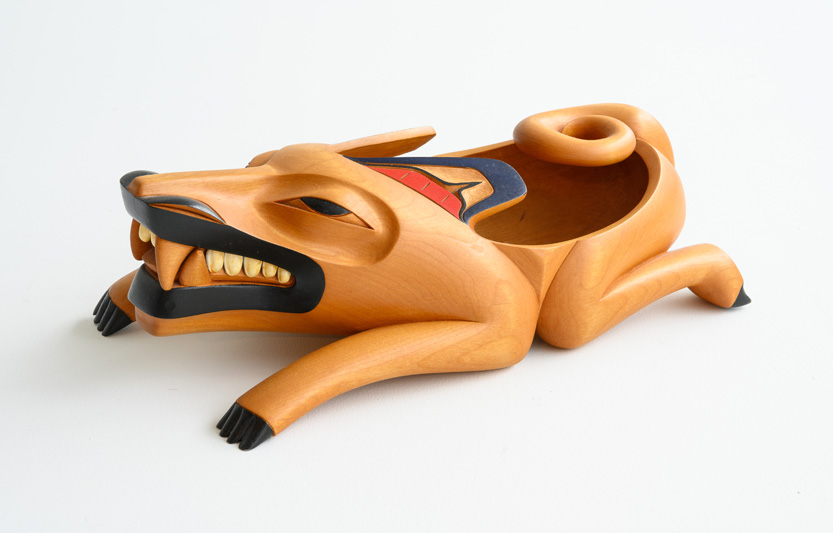Stepping into the Audain Art Museum’s spring-summer exhibition feels like stepping through a space/time portal into a mysterious northern forest. It’s where wolves, frogs, bears, and salmon emerge from trees in human and animal spirit forms to weave stories and hold congress together.
The exhibition, Wolves: The Art of Dempsey Bob, and it’s an unforgettable immersion into magic and beauty, traditional artistry, and unparalleled skill. The stunning carvings, beautiful prints, bold jewellery, bronze casts, bowls, robes, and regalia represent more than 50 years of work by Dempsey Bob, Tahltan-Tlingit artist and member of the Wolf Clan. Bob’s signature playfulness within the traditional form, his highly polished surfaces of alder and cedar, and his ability to incorporate secondary materials including mirrors, operculum shell, fur, horse hair, acrylic paint, and sea lion whiskers are on full display in the Audain’s spacious galleries.
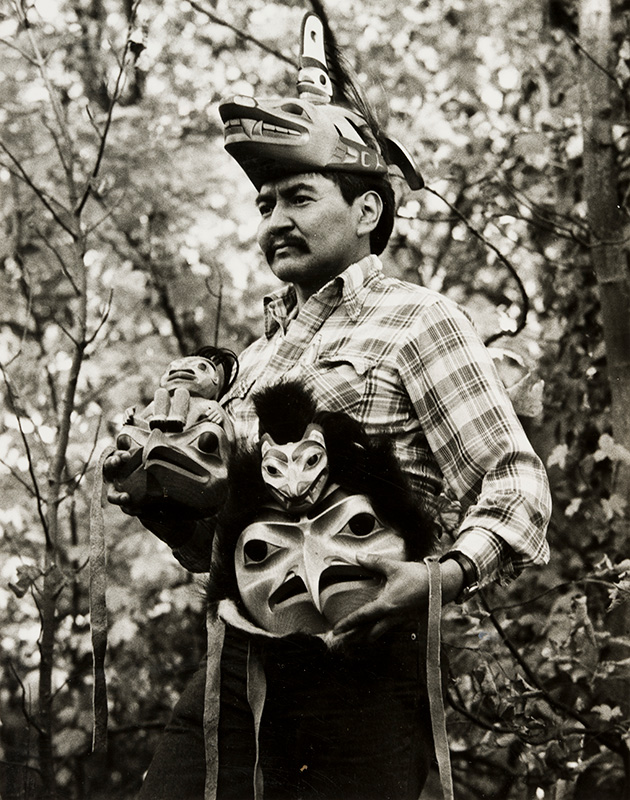
Dempsey Bob wearing Killer Whale Headdress and holding Eagle Human Mask and Eagle Bear Mask, all 1987, in University of British Columbia, Museum of Anthropology collection.
Photograph courtesy of Dempsey and Margaret Bob.
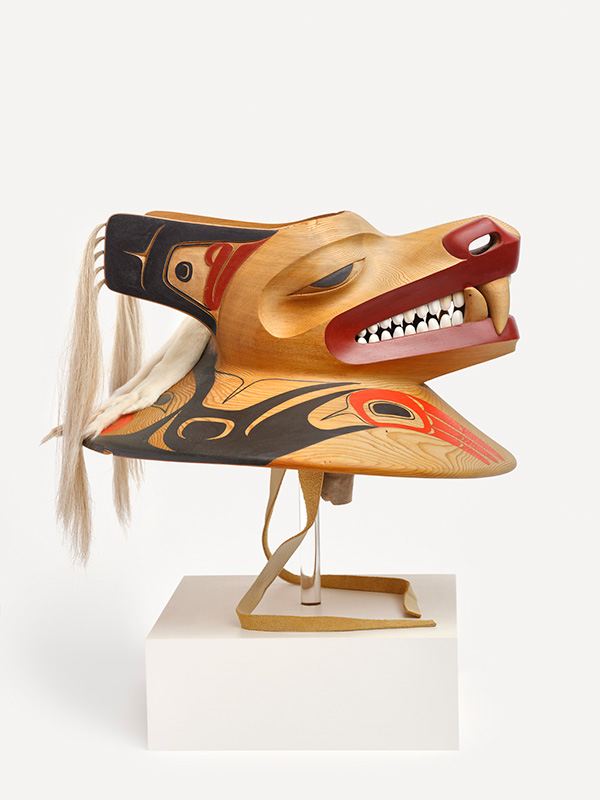
Dempsey Bob, Wolf Chief’s Hat, c. 1993
red cedar, acrylic paint, operculum shell, horsehair, leather, ermine
Collection of Eric Savics - Rachel Topham Photography
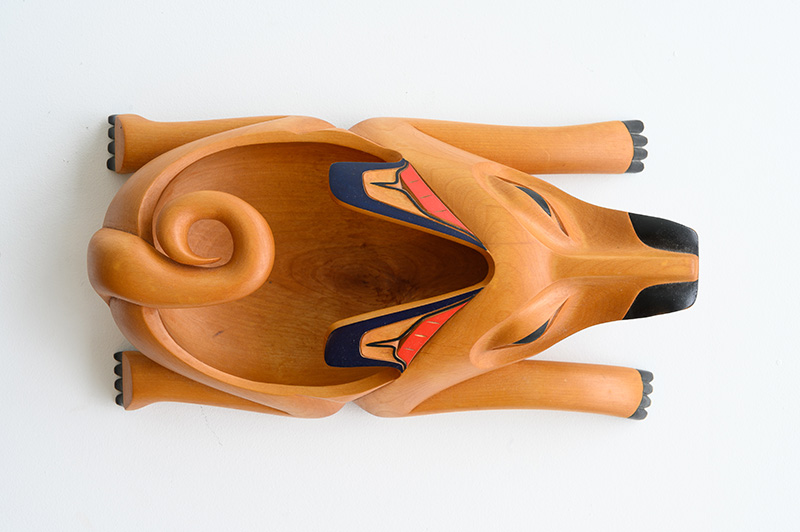
Dempsey Bob
Wolf Bowl, 1991
alder wood, acrylic paint, operculum shell
Collection of Eric Savics - Scott Brammer Photography
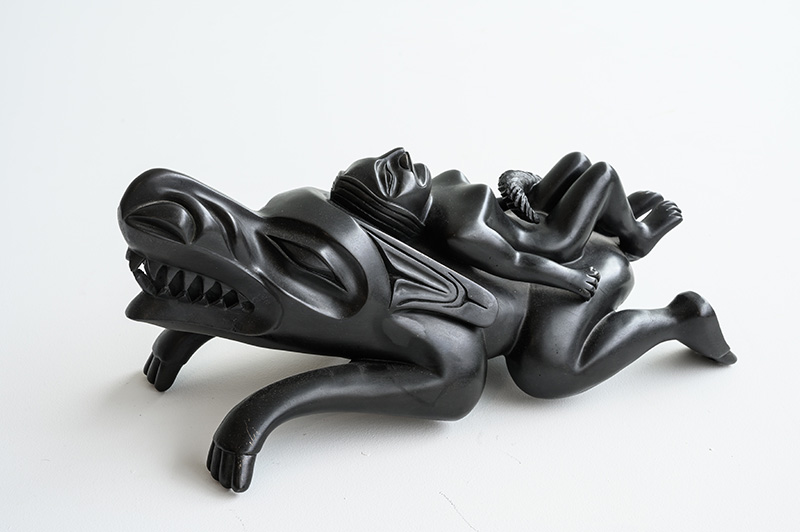
Dempsey Bob, Wolf and Woman, c. 1997
bronze; edition 6 of 8
cast at the Fonderia d’Arte Massimo Del Chiaro
Collection of Eric Savics - Scott Brammer Photography
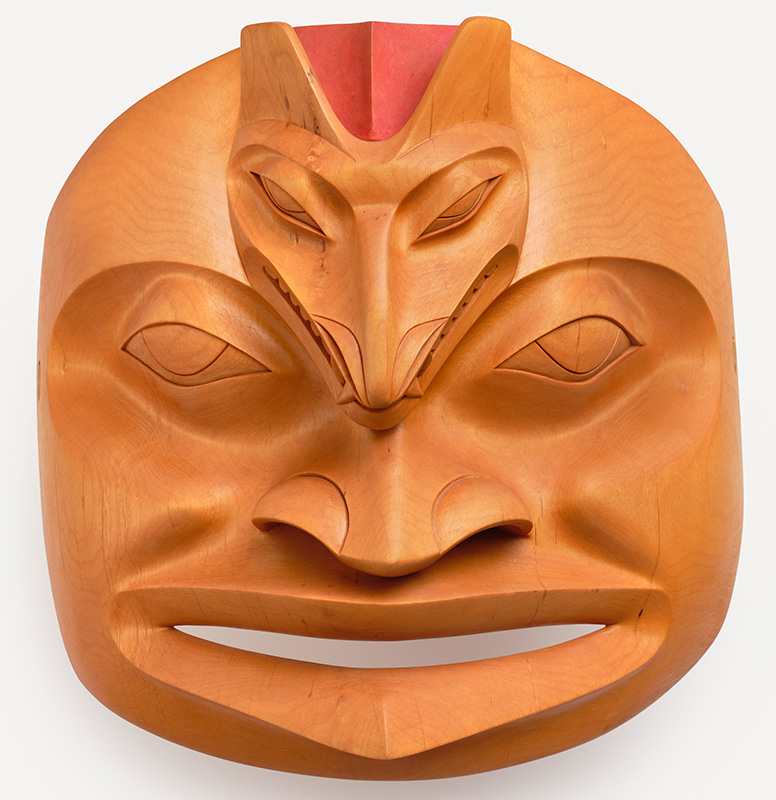
Dempsey Bob, Wolf Human Mask, 1992
alder wood and acrylic paint
Collection of Eric Savics - Rachel Topham Photography
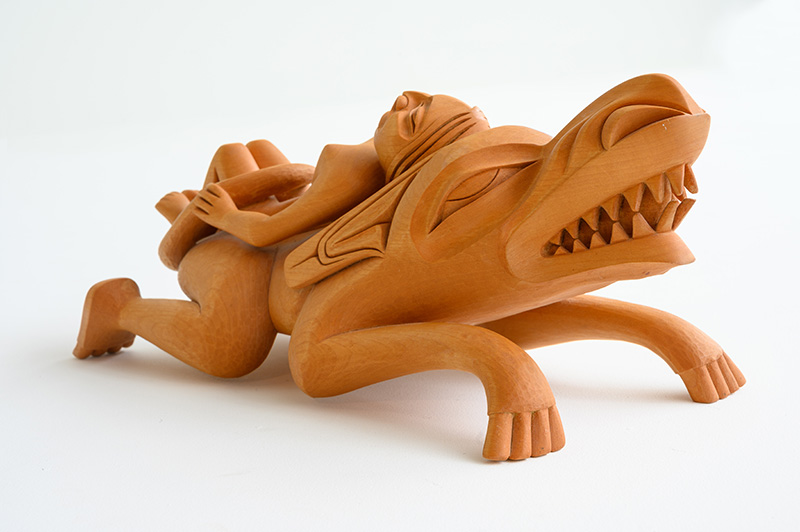
Dempsey Bob, Wolf and Woman, c. 1997
alder wood
Collection of Eric Savics
Scott Brammer Photography
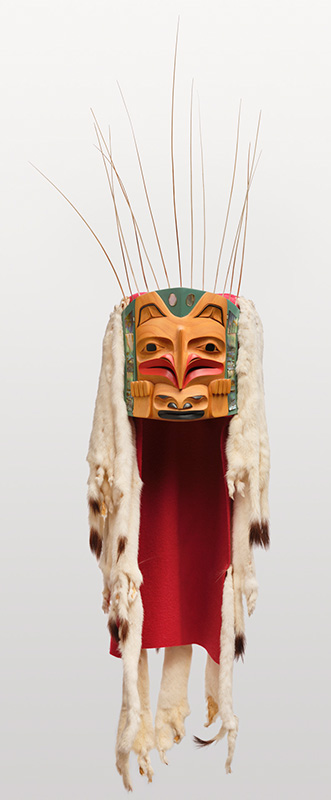
Dempsey Bob
Eagle Chief’s Frontlet, c. 1992
Alder wood, acrylic paint, abalone shell, sea lion whiskers, ermine fur
Collection of Eric Savics
Rachel Topham Photography
He was also inspired by watching his father, a carpenter, cut kindling in the mornings. The long, curly wood shavings fascinated him, and he knew he was destined to work with his hands, making things with wood like his parents, grandparents, aunts and uncles.
However, this wasn’t a career path that was taken lightly. Many people are unaware of Canada’s dark history around First Nations art. The Potlach Ban, instituted by the Canadian government in the late 1800s, rendered traditional Indigenous art illegal in this country. The ban was an attempt to terminate First Nations culture, which was seen as preventing Indigenous people from becoming “civilized.”
“We almost lost our history because of what happened to us,” said Bob, who was a toddler when the ban was repealed. “We weren’t allowed to carve until 1951. We weren’t allowed to wear our regalia.”
Many people were arrested and imprisoned for practicing The Potlatch and all it entailed — songs, dances, masks, blankets, and speeches. Passing on the teachings of his ancestors and his mentor, Freda Diesing, is part of Bob’s motivation for continuing to make art and teach his skills to upcoming generations. “Our art is too beautiful to be lost.”
Bob recounted the inspirational words of his grandmother: “‘We’re Tlingit,’ she said. ‘It’s who we are. It’s in our blankets, our bracelets, our masks, our boxes, our songs. When we show our face (our wolf crest) on our robes, on our carvings, it’s gotta be the best.’ And that’s what I believe. If you don’t do your best, don’t do it at all. My work keeps evolving. If art isn’t growing, it’s dying.”
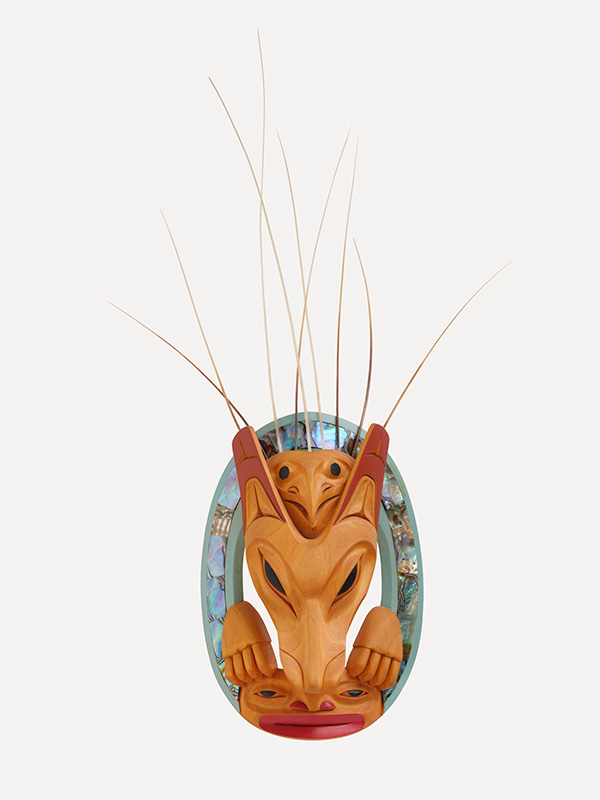
Dempsey Bob, Wolf Eagle Frontlet, 1996
alder wood, acrylic paint, abalone shell, sea lion whiskers
Collection of Eric Savics
Rachel Topham Photography
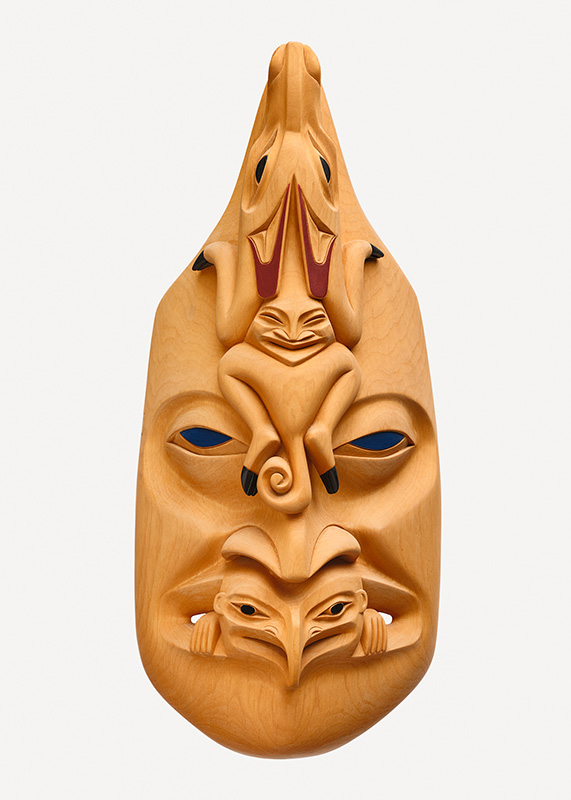
Dempsey Bob, Wolf, Eagle, and Human Mask, 1997
alder wood and acrylic paint
Collection of Eric Savics - Rachel Topham Photography
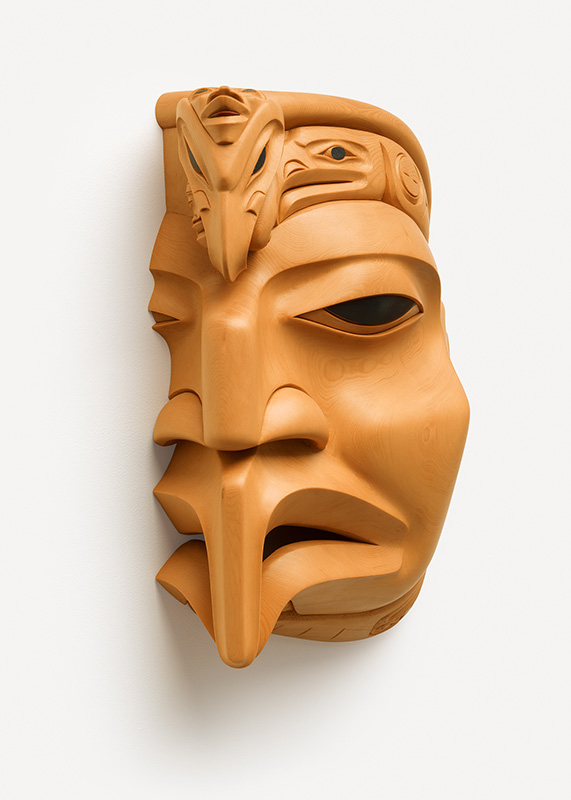
Dempsey Bob, Northern Eagles Transformation Mask, 2011
yellow cedar and acrylic paint
Audain Art Museum Collection
Gift of Michael Audain and Yoshiko Karasawa
Trevor Mills Photography
Bob eventually studied carving under Diesing, the renowned master carver for whom he later named the Freda Diesing School of Northwest Coast Art in Terrace. He was appointed an Officer of the Order of Canada in 2013 for his lifetime of work as a carver and art teacher and his dedication to Tahltan-Tlingit cultural preservation. He also received a Governor General’s Award in Visual and Media Arts in 2021. Today he is busy with his own projects and working with young artists from across Canada.
Wolves: The Art of Dempsey Bob is on display in Whistler until Aug. 14, 2022. The exhibition then tours to the Glenbow Museum in Calgary, McMichael Canadian Art Collection in Kleinburg, Ont., Montreal Museum of Fine Arts, and the Kelowna Art Gallery, B.C. You can also see his work at the Vancouver International Airport, and it is part of public and private collections worldwide.
This exhibition is a co-production of the McMichael Canadian Art Collection and is accompanied by a fully illustrated hard cover book featuring the artist’s life stories and legends entitled Dempsey Bob: In His Own Voice.
audainartmuseum.com | 604-962-0413

